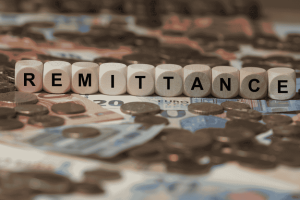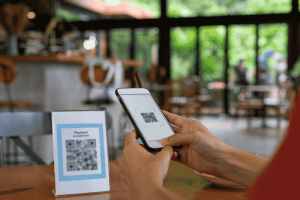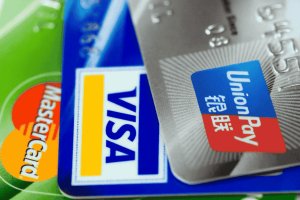With living costs on the rise in many parts of Asia, from rent hikes in Bangkok to electricity tariff increases in Manila, households are feeling the pressure to make smarter financial decisions. But cutting costs doesn’t have to mean cutting comfort. In fact, there are several practical and easy ways to reduce your monthly expenses while still enjoying the lifestyle you’re used to. Whether you’re living in a bustling city like Jakarta or managing a household in suburban India, the key lies in adopting efficient habits and tools that prioritize value over sacrifice.
Review Recurring Subscriptions and Services

Eliminate Redundancy Without Losing Access
From streaming services to cloud storage and fitness apps, monthly subscriptions have become a silent drain on bank accounts. In Singapore, where residents enjoy a wide range of digital services, many people unknowingly pay for overlapping subscriptions.
Start by checking your debit or credit card statements from the last three months. Use apps like Spendee or Money Lover to highlight recurring charges. Ask yourself:
- Do I need both Spotify and YouTube Premium?
- Am I paying for unused cloud storage?
- Can I switch to a family or student plan?
By streamlining these services, you can retain what you love while trimming the fat — a win-win.
Lower Your Utility Bills With Simple Adjustments
Utilities like water, gas, and electricity often make up a big chunk of monthly expenses, especially in warmer countries where air-conditioning is essential.
Smart Cooling and Lighting in Hot Climates
In Malaysia or Thailand, air-conditioners are heavily used. But small adjustments can lead to significant savings:
- Set your AC to 25°C instead of 22°C to cut electricity usage by up to 20%
- Use fans alongside AC to circulate air more efficiently
- Clean AC filters monthly for better performance
Switching to LED bulbs reduces electricity consumption by 75% compared to traditional lighting. In cities like Ho Chi Minh City or Manila, this switch pays off fast, especially in homes with multiple rooms.
Water-Saving Habits
In India, households can reduce water bills by installing low-flow showerheads and fixing leaks promptly. A dripping tap can waste 9,000 liters of water annually — and you still pay for it.
Use washing machines with full loads, turn off taps while brushing, and reuse grey water (e.g., water used to rinse vegetables) for watering plants.
Use Local Apps to Earn Cashback and Pay Smarter
Mobile payment platforms are booming across Asia. These apps don’t just make payments easier — they can save you money through cashback, discounts, and loyalty points.
Maximize Benefits with E-Wallets
- PhonePe and Google Pay (India): Frequently offer cashback on bill payments
- Touch ’n Go eWallet (Malaysia): Provides savings on tolls, groceries, and utilities
- GCash (Philippines): Offers rewards when paying for electricity, water, or telecom bills
- GrabPay (regional): Useful for bundling rides, food, and bill payments with vouchers
By routing payments through digital wallets that offer rebates, you gain small savings on expenses you’d incur anyway.
Switch to More Efficient Mobile and Internet Plans
Mobile data and internet are essential today, especially for remote workers and students. But many people stay locked into expensive plans out of habit.
Review and Compare Plans
In Indonesia, providers like Telkomsel, XL Axiata, and Indosat offer flexible prepaid packages that often cost less than postpaid plans.
In Vietnam, comparing packages from Viettel, Mobifone, and Vinaphone can reveal savings of up to 30%, especially if you don’t consume large amounts of data every day.
Regularly visiting comparison sites or using telco apps helps you understand your real usage and adjust your plan accordingly.
Reduce Food Costs Without Compromising on Quality

Food expenses can balloon, especially when convenience takes over. But with some planning and awareness, you can eat well and still save.
Cook Smart and Use Cashback Food Platforms
In South Korea or Japan, meal-prepping for the week helps reduce impulse spending at convenience stores or cafes. Simple bento-style meals can be both nutritious and cost-effective.
In countries like Thailand, food delivery apps such as LINE MAN, Foodpanda, or GrabFood often have promos or discounts during off-peak hours. Pairing these with cashback wallets gives you additional value.
Additionally, buying from local wet markets — common in Vietnam, Cambodia, and Myanmar — can cost far less than shopping at major supermarkets.
Refinance or Consolidate Loans and Debts
Debt repayment is another area where smart tweaks can save hundreds each month.
Consider Local Consolidation or Refinancing
In India, many banks now allow personal loan refinancing at lower interest rates. If you’re paying 16–18% interest on credit card debt, moving it to a 10% personal loan through Fintech platforms like NIRA or MoneyTap can drastically reduce your monthly burden.
In Singapore, banks such as DBS or OCBC offer debt consolidation plans with structured repayments. These are especially useful for salaried professionals juggling multiple loans.
Rethink Transportation Choices
Transport expenses can be quietly expensive — especially for commuters. But there are ways to reduce costs without sacrificing convenience.
Smarter Commuting Options
In Bangkok, the BTS Skytrain monthly pass offers unlimited rides and substantial savings for daily travelers.
In Manila, combining LRT passes with occasional ride-sharing can save more than using Grab or taxis every day.
Cycling is growing in popularity in Taiwan, Singapore, and Vietnam, supported by expanding bike-sharing networks. It’s a healthy, budget-friendly choice — especially for short city commutes.
Use Free Tools to Monitor and Optimize Spending
Budgeting apps are essential for spotting patterns and optimizing monthly bills. Many free platforms are now tailored for Asian users.
Best Free Apps to Track and Cut Spending
- Planto (Hong Kong): Connects with local banks to track spending trends
- Wally (Global, supports Asian currencies): Allows manual and bank-linked expense tracking
- Monny (Taiwan): Fun, gamified interface for budget-conscious users
These tools help you visualize where your money goes, allowing you to cut back without compromising comfort.
Focus on Value, Not Just Cost
The most effective way to save on monthly bills is to rethink spending in terms of value gained, not just money spent. This means asking:
- Am I using what I’m paying for?
- Is there a better alternative for the same comfort level?
- Can I bundle or automate to reduce effort and save more?
From choosing more efficient mobile data packages in Kuala Lumpur to using cashback platforms for grocery shopping in Bangalore, small decisions stack up. Over time, they allow you to maintain your lifestyle while building more breathing room in your monthly budget.
Financial Comfort Doesn’t Mean Overspending

Living well and spending smart don’t have to be opposing goals. Across Asia, where costs are rising but innovation is also thriving, people are finding creative ways to reduce monthly expenses without feeling deprived. By reviewing subscriptions, optimizing utilities, using fintech tools, and adjusting spending habits, it’s possible to make room in your budget for savings — without sacrificing the comforts that matter.
Financial peace often comes not from earning more, but from spending wisely. The smartest households are those that recognize this and build habits to reflect it — comfortably, sustainably, and with intention.









